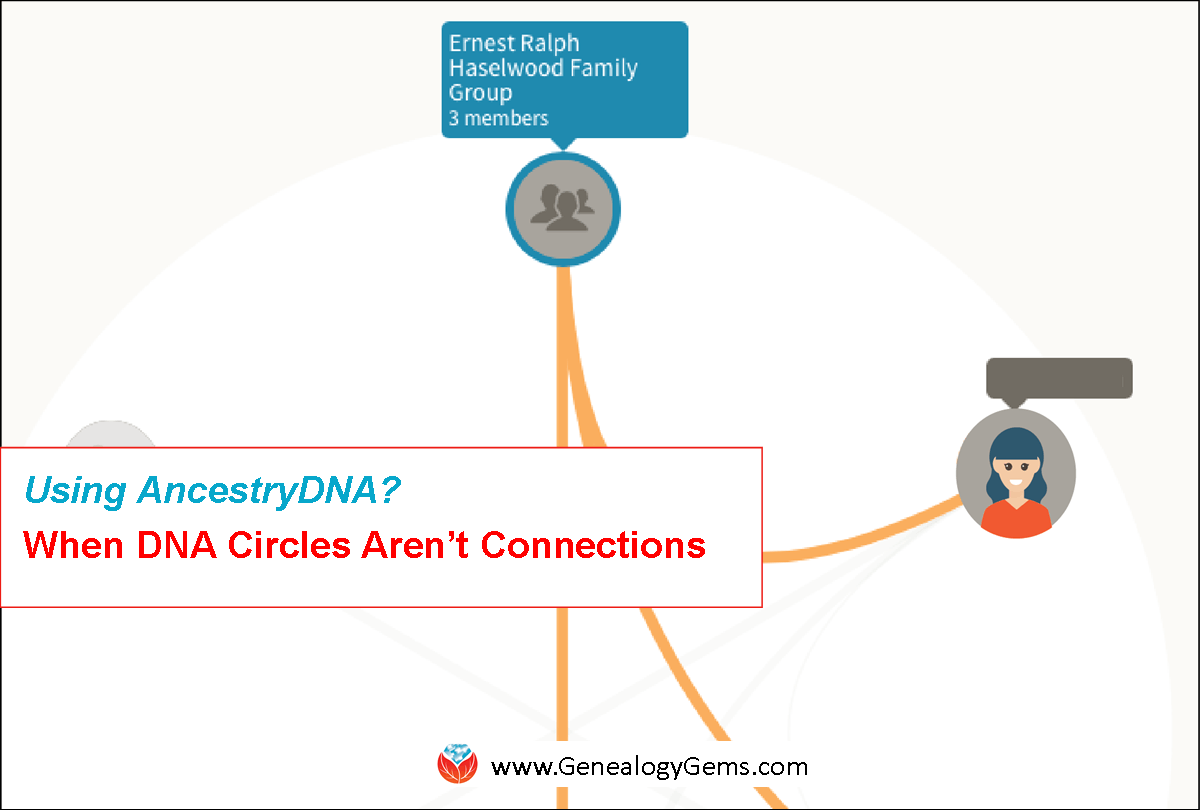by Lisa Cooke | Oct 23, 2017 | 01 What's New, DNA, Trees |
If you’re doing DNA tests for family history, you may see lots of predicted cousin matches: 2nd, 3rd, 4th, etc…..But what does that predicted genetic relationship actually mean? Learn about centimorgans, the powerful genetic genealogy unit of measure, and how it helps your research.
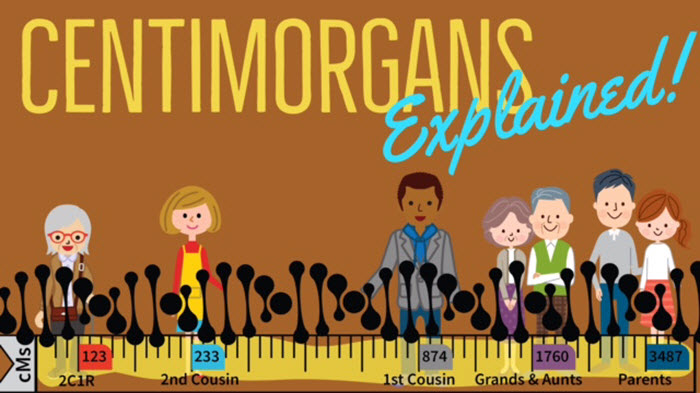
How DNA Tests Measure Genetic Relationships
 When we are looking at genetic relationships, there are also many ways we can measure them. But ultimately, we want the testing company to tell us how likely it is that a particular individual shares a single, recent common ancestor with us. One factor in this calculation is to take into account the total amount of DNA we share with that match.
When we are looking at genetic relationships, there are also many ways we can measure them. But ultimately, we want the testing company to tell us how likely it is that a particular individual shares a single, recent common ancestor with us. One factor in this calculation is to take into account the total amount of DNA we share with that match.
Currently, all the testing companies are reporting this sum in centimorgans (cMs). Every company reports to you the total number of shared cMs, as outlined below.
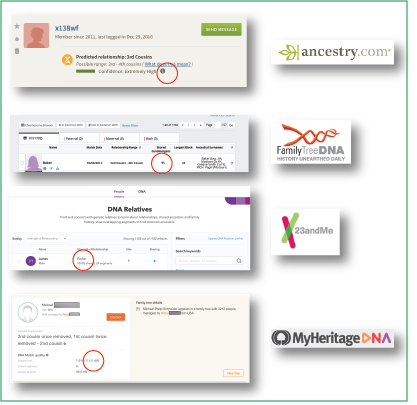 AncestryDNA: Click on the match to access the personal profile page for that match. In the second section, under Predicted Relationship, you will see the confidence level. To the right of the confidence level, you will see a grey circle with a little “i” in it. Clicking there will show you the total amount of shared cMs as well as how many pieces of DNA you share.
AncestryDNA: Click on the match to access the personal profile page for that match. In the second section, under Predicted Relationship, you will see the confidence level. To the right of the confidence level, you will see a grey circle with a little “i” in it. Clicking there will show you the total amount of shared cMs as well as how many pieces of DNA you share.- Family Tree DNA: On the main match page for your Family Finder results, you will see the total amount of shared cMs in the third column.
- 23andMe: You can see the percentage of shared DNA from the main DNA Relatives home page. To convert the percentage into centimorgans, just multiply your percentage by 68 (that will at least get you close). You can also see total shared cMs in the chromosome browser tool (go to Tools > DNA Relatives > DNA).
- MyHeritageDNA: The total amount of shared DNA is shown on the main match page under the title Match Quality. MyHeritage also has a new DNA Match Review page. Click here to read more about that.
Centimorgan: A Genetic “Crystal Ball”
 It is very tempting to think of a cM just like you would think of an inch or a centimeter, and for all practical purposes, that is okay. But it is actually much more complicated than that.
It is very tempting to think of a cM just like you would think of an inch or a centimeter, and for all practical purposes, that is okay. But it is actually much more complicated than that.
A cM is actually more like a crystal ball: it helps us predict how likely a piece of DNA looks exactly as it did a generation ago. This, in turn, helps us calculate how far back we should be looking for the common ancestor between two people.
But for our practical purposes, you can use the total amount of shared DNA, in combination with this chart compiled by Blaine Bettinger and the Shared cM Project, to better assess your genealogical relationship with your match based on your genetics.
To use the chart, take the total amount of shared DNA you have with a match, and look up that number in the chart to get an idea of what kind of genealogical relationship might best fit the genetics that you see. For example, if I share 69 cM with my match, we might be third cousins. But we might also be second cousins once or twice removed.
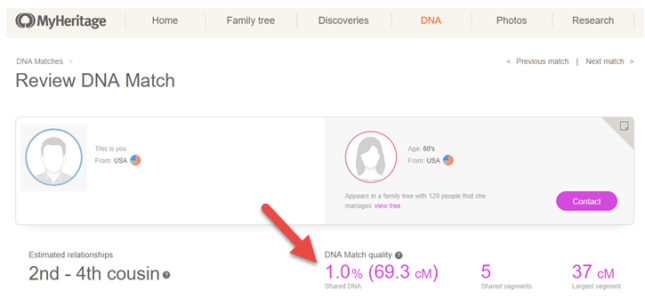
How do you figure out which one? Simply put: do genealogy research! It’s time to use traditional records and research skills to better understand the genetic clues in your family history mysteries.

My series of DNA quick reference guides can help you get the most out of your DNA tests for family history. I definitely recommend the value-priced bundle of all 10 guides. But I especially recommend the guides listed below if you’re to the point where you’re trying to understand what genetic relationships mean:
Thanks for sharing this post with someone who would enjoy reading it! You’re a gem!
Disclosure: This article contains affiliate links and Genealogy Gems will be compensated if you make a purchase after clicking on these links (at no additional cost to you). Thank you for supporting Genealogy Gems!

by Lisa Cooke | May 9, 2016 | 01 What's New, Ancestry, DNA
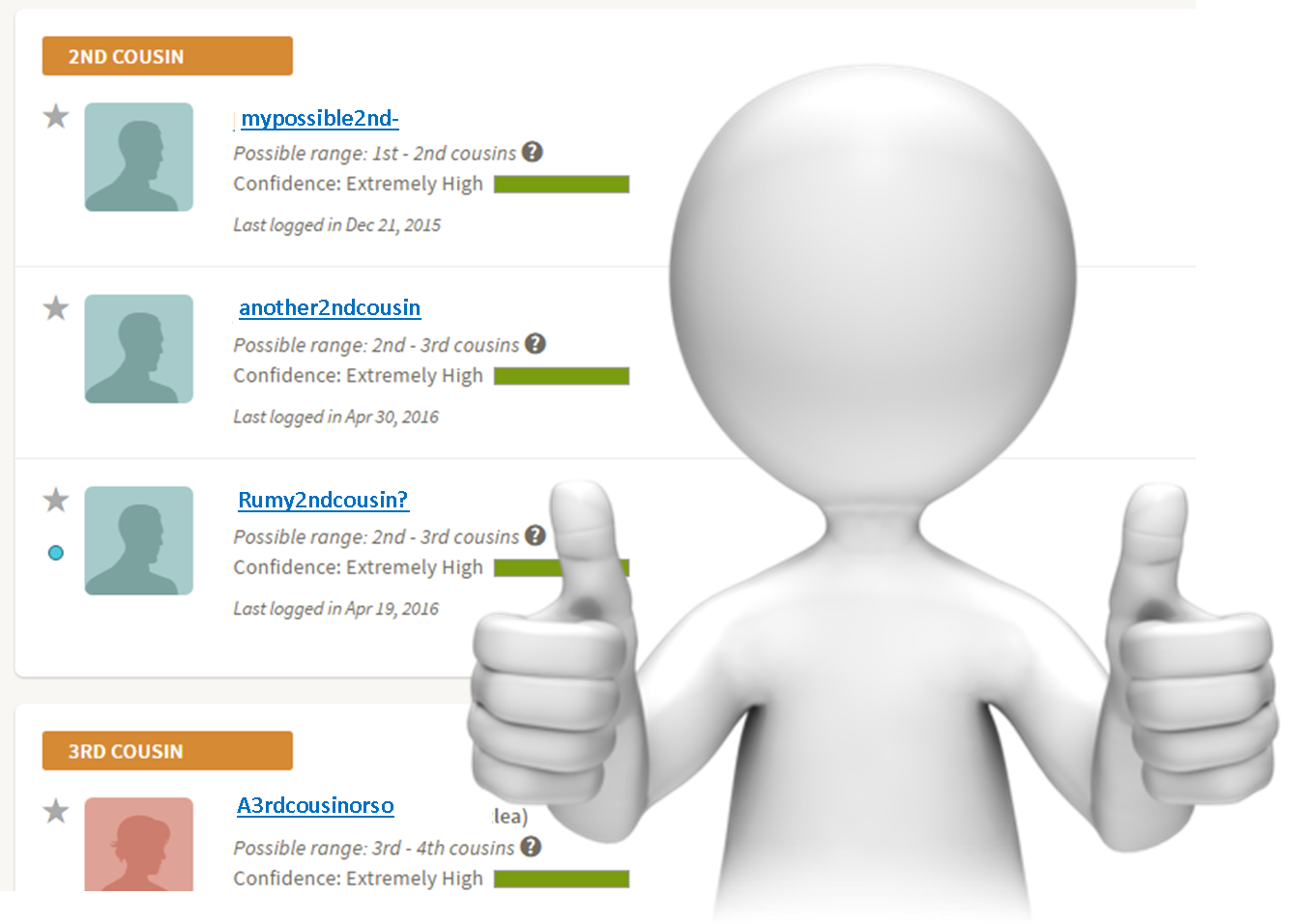 Double good news: AncestryDNA has made some improvements to the way they calculate your genetic matches, but they haven’t messed with the site format or layout. There is one downside–so keep reading.
Double good news: AncestryDNA has made some improvements to the way they calculate your genetic matches, but they haven’t messed with the site format or layout. There is one downside–so keep reading.
Change is afoot at AncestryDNA. Again.
While stability and predictability seem like honorable qualities in a company or product, when it comes to tech tools, in the ears of tech companies, those words sound more like dated and old. Of course, we are used to this by now. I had a client tell me recently that he wanted to be in touch sooner, but his grandson “upgraded” his computer to Windows 10 and then promptly left for college the next day, leaving him fighting with a new interface and operating system.
The good news is, you won’t have this problem with Ancestry’s new update. There aren’t any changes to the interface or the layout of the information. In fact, many of you will not even notice at first that your match list has changed. You’ll just see this notification when you log in:

But in fact, there likely have been some adjustments made to your match results:
- Some of your third cousins have been demoted to fourth cousins.
- Some of your fourth cousins have been demoted to 5th-8th cousins.
- Some of your Distant Cousins have disappeared off your match list
- You have new cousins on your Distant Cousin match list.
In general, from what Ancestry has showed us, you gain more than you lose.
Changes in the dregs of your match list may not seem like that big of a deal. But Ancestry has made some big changes in the way that they are calculating matches. They are getting better at it. Which means you match list is now more representative of your ancestral connections, even at the very distant level.
There are two big pieces to this matching puzzle that Ancestry has tinkered with in this latest update: phasing and matching.
You will remember our discussion on DNA phasing and how it can impact your matching. Ancestry has developed a robust reference database of phased DNA in order to better phase our samples. Basically, they have looked through their database at parent-child duos and trios and noted that certain strings of DNA values often travel together. It’s like they have noticed that our DNA says “A black cat scared the mouse” instead of “The brown cat ate the mouse” and they can then recognize that phrase in our DNA, which in turn helps our DNA tell the true story of our heritage.
In addition to updating the phasing, Ancestry has revamped their matching method. In the past they viewed our DNA in small windows of information, and then stitched those windows together to try to get a better picture of what our DNA looked like. Now instead they have turned to a point-by-point analysis of our DNA. Again to use a sentence example, with the window analysis we may have the following sentence windows:
ack and J
ill went t
he hill t
etch a pai
l of water.
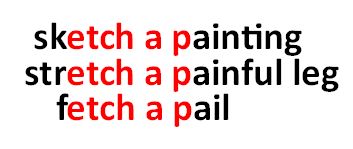 Of those windows, you may share the “etch a pai” with another individual in the database, earning that cousin a spot on your match page. However, the truth is, that bit could say “sketch a painting” or “stretch a painful leg” or “fetch a pail.” With Ancestry’s new method, they are able to see farther on either side of the matching segment, making this clearly “fetch a pail.” That means better matching, which means more confidence in your cousin matches.
Of those windows, you may share the “etch a pai” with another individual in the database, earning that cousin a spot on your match page. However, the truth is, that bit could say “sketch a painting” or “stretch a painful leg” or “fetch a pail.” With Ancestry’s new method, they are able to see farther on either side of the matching segment, making this clearly “fetch a pail.” That means better matching, which means more confidence in your cousin matches.
The downside to this update is going to come in the reorganization of some of your relationships. Ancestry has tightened their genetic definition of your third and fourth cousins. Basically, that means that some of your true 3rd cousins are going to show up as 4th cousins, and some of your true 4th cousins are going to be shifted down into the abyss of 5th-8th cousins.
This brings us to the downside of this AncestryDNA update: changes to the Shared Matches tool. The shared matches tool allows you to gather matches in the database that are related to you and one other person, provided you are all related at the 4th cousin level or higher. This tightening of the belt on 4th cousins means that some of them are going to drop through the cracks of that tool, really limiting its ability. Grr. Hopefully, Ancestry will fix that, and expand this tool to include all of your matches. They have their fairly good reasons for this, but still….
So, as the winds of change blow yet another iteration of the AncestryDNA match page, I think we can see this as an overall win for doing genealogy with our genetics at Ancestry.
More AncestryDNA Gems

Disclosure: This article contains affiliate links and Genealogy Gems will be compensated if you make a purchase after clicking on these links (at no additional cost to you). Thank you for supporting Genealogy Gems!

 When we are looking at genetic relationships, there are also many ways we can measure them. But ultimately, we want the testing company to tell us how likely it is that a particular individual shares a single, recent common ancestor with us. One factor in this calculation is to take into account the total amount of DNA we share with that match.
When we are looking at genetic relationships, there are also many ways we can measure them. But ultimately, we want the testing company to tell us how likely it is that a particular individual shares a single, recent common ancestor with us. One factor in this calculation is to take into account the total amount of DNA we share with that match. AncestryDNA: Click on the match to access the personal profile page for that match. In the second section, under Predicted Relationship, you will see the confidence level. To the right of the confidence level, you will see a grey circle with a little “i” in it. Clicking there will show you the total amount of shared cMs as well as how many pieces of DNA you share.
AncestryDNA: Click on the match to access the personal profile page for that match. In the second section, under Predicted Relationship, you will see the confidence level. To the right of the confidence level, you will see a grey circle with a little “i” in it. Clicking there will show you the total amount of shared cMs as well as how many pieces of DNA you share. It is very tempting to think of a cM just like you would think of an inch or a centimeter, and for all practical purposes, that is okay. But it is actually much more complicated than that.
It is very tempting to think of a cM just like you would think of an inch or a centimeter, and for all practical purposes, that is okay. But it is actually much more complicated than that.



 Double good news: AncestryDNA has made some improvements to the way they calculate your genetic matches, but they haven’t messed with the site format or layout. There is one downside–so keep reading.
Double good news: AncestryDNA has made some improvements to the way they calculate your genetic matches, but they haven’t messed with the site format or layout. There is one downside–so keep reading.
 Of those windows, you may share the “etch a pai” with another individual in the database, earning that cousin a spot on your match page. However, the truth is, that bit could say “sketch a painting” or “stretch a painful leg” or “fetch a pail.” With Ancestry’s new method, they are able to see farther on either side of the matching segment, making this clearly “fetch a pail.” That means better matching, which means more confidence in your cousin matches.
Of those windows, you may share the “etch a pai” with another individual in the database, earning that cousin a spot on your match page. However, the truth is, that bit could say “sketch a painting” or “stretch a painful leg” or “fetch a pail.” With Ancestry’s new method, they are able to see farther on either side of the matching segment, making this clearly “fetch a pail.” That means better matching, which means more confidence in your cousin matches.